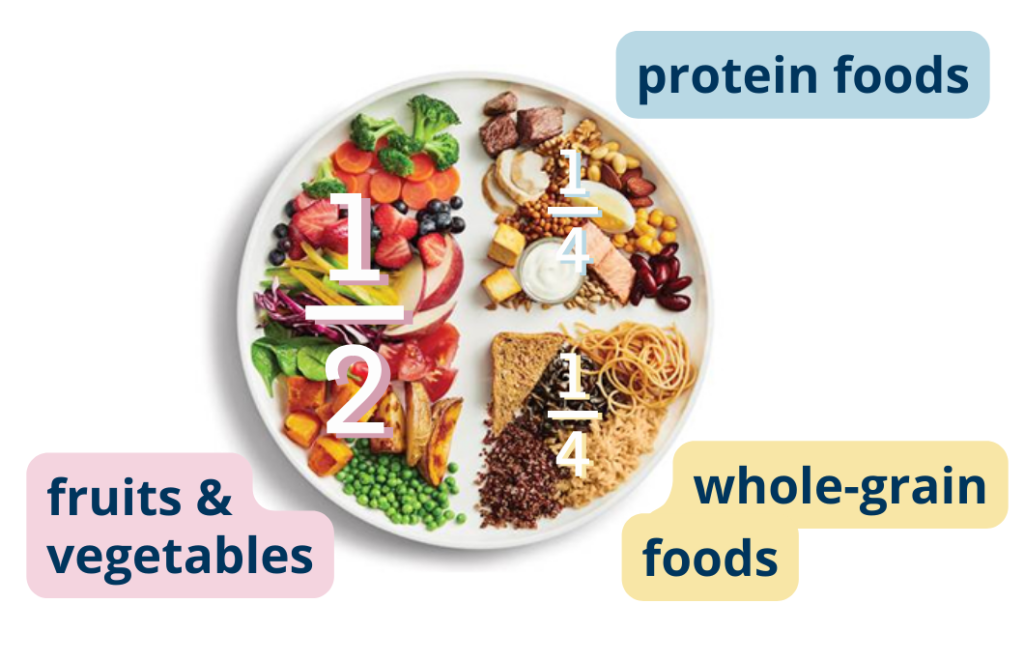How can we eat BETTER? To do this, we need to understand why food is so important! Nutrition is the starting point of our health because the food we eat plays an essential role in the functioning of our body.
Basics
– The ones that immediately come to mind when we talk about food: macronutrients.
– Then there are others, often forgotten or misunderstood: micronutrients.
Macronutrients provide energy (measured in
kilocalories). They include:
– Proteins: these provide 4 kilocalories per gram, and are found mainly in meat, fish, eggs and dairy products, and in smaller quantities in certain cereals and pulses. We need to eat about 110 g of proteins every day (for a 2500 calories diet).
– Carbohydrates (sugars): like proteins, they provide 4 kilocalories per gram. There are two sub-categories: complex carbohydrates, found in cereal products and pulses, and simple carbohydrates, found mainly in fruits, sweets, cookies, etc. We need about 320 g of carbohydrates every day (for a 2500 calories diet).
– Lipids (fats): provide 9 kilocalories per gram. They are found in butter, cream and oils, and in certain foods such as dairy products and oily fish. We need to eat about 90 g of fat every day (for a 2500 calories diet).
Unlike macronutrients, micronutrients are not intended to provide energy. They are, however, essential for the proper functioning of the body. There are several sub-categories in this group:
– Vitamins, which include vitamins A, C, D, E, K and B (B1 to B12). The foods richest in vitamins are fruits and vegetables, while vitamin B12 comes from animal products.
– Minerals, which are further divided into sub-categories:
o Macroelements: magnesium, calcium, sodium, potassium, phosphorus, chlorine, sulfur;
o And trace elements: chromium, iron, fluorine, iodine, cobalt, copper, manganese, molybdenum, nickel, vanadium, zinc, tin, etc.
They are found in plants, mineral waters and seafood.
– Antioxidants include carotenoids (e.g. beta-carotene, lycopene, etc.) and polyphenols (flavonoids, etc.). They are found in plants (e.g. red berries, soy).
– And finally, probiotics, which are the micro-organisms that make up the flora of the human body (oral, intestinal, vaginal flora…). They are found in certain foods such as fermented products, yogurts, cheese, kefir…
Micronutrients need to be supplied in smaller quantities than macronutrients, in the order of mg or µg per day. They assist in many important reactions linked with energy production, regulate gene expression or quench harmful free radicals. They rarely do much by themselves. As micronutrients help our body process energy from macronutrients, both are essential to preserve optimal health.
Tip 1: Consume macronutrients AND micronutrients.
Micronutrients in detail
Micronutrients are elements that, with a few exceptions, cannot be synthesized by the body. They must therefore be supplied by the diet, as they are essential for all the body’s functions. Some cells cannot function without them.
Red blood cells, for example, need iron to transport oxygen.
Iodine is a structural and functional component of thyroid hormones. Through these hormones, iodine plays a part in many of the body’s structures and functions: it plays a fundamental role in carbohydrate and lipid homeostasis and in energy metabolism; it acts on the development of neurological and cognitive functions; it also has functions on the optimal health of skin and appendages.
Antioxidant micronutrients are those that help combat premature cell ageing, such as vitamin A and E, or enzymes like glutathione peroxidase and superoxide dismutase that need zinc, copper, manganese or selenium to work effectively.
Tip 2: As micronutrients are not manufactured by the body, they must be supplied through a healthy, balanced diet.
A balanced diet
Let’s return to the topic of food. Food is a natural source of many nutrients. A varied, balanced diet provides a daily intake of macro and micronutrients.
What is a healthy, balanced diet? Don’t worry, it doesn’t mean the same as “being on a diet”. You’ll find it’s much simpler than you think.
If we break down our plate, we should find:
– ½ of the plate should contain fruits and vegetables
– ¼ of the plate in contain protein foods (pulses, fish, meat, eggs, dairy products)
– The remaining ¼ should contain whole-grain foods (cereals)

A few final tips:
– Eat fruits and vegetables, wich are packed with micronutrients.
– No food contains all nutrients you need. Vary foods for a multitude of micronutrients.
– Avoid processed foods and beverages, wich contain too much energy but are rather poor in nutrients.
So what are you waiting for to make food your priority?
This year, take charge of your health!